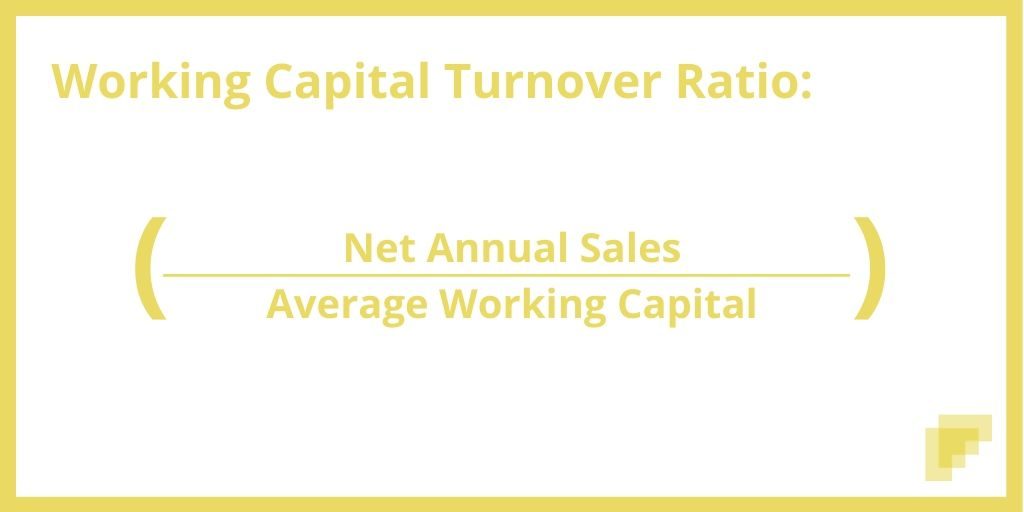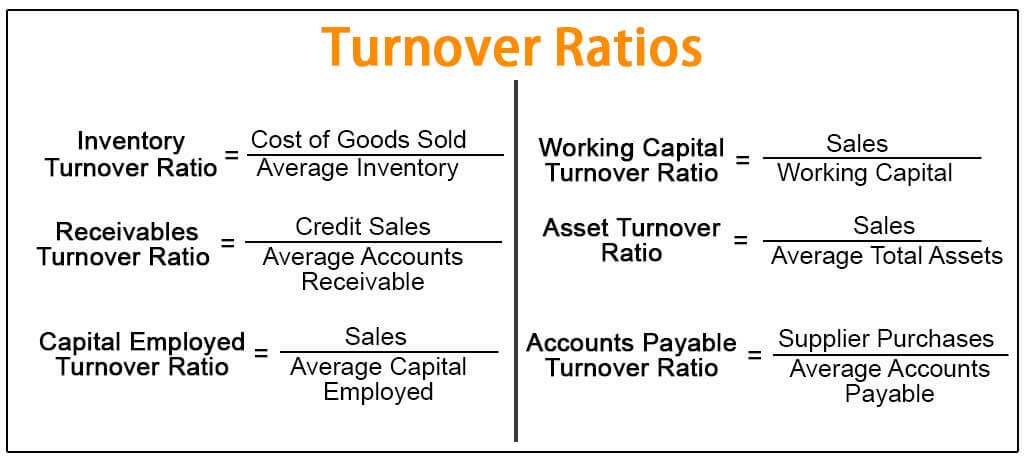Your Guide To Asset Turnover Ratio

Adam received his master’s in economics from The New School for Social Research and his Ph.D. from the University of Wisconsin-Madison in sociology. He is a CFA charterholder as well as holding FINRA Series 7, 55 & 63 licenses. He currently researches and teaches economic sociology and the social studies of finance at the Hebrew University in Jerusalem. Attempt to negotiate better terms on leases and other fixed costs to lower total expenses. Our in-house research team and on-site financial experts work together to create content that’s accurate, impartial, and up to date.
- Hence, as a business person, understanding your company’s working capital turnover ratio is essential for long-term financial success.
- In other words, it displays the relationship between the funds used to finance the company’s operations and the revenues the company generates as a result.
- In other words, the turnover is lower than the minimum levels as per the given amount of working capital employed.
- Additionally, businesses need to ensure that they make comparisons with companies in their industries, taking note of the differences in operations across various sectors.
- If the previous year ratio was higher than 3.89, this would suggest that utilization of the working capital during the period has become inefficient or rather, less efficient than before.
- If keeping track of all these variables sounds complicated to you, don’t worry; just put all the numbers into our working capital turnover ratio calculator to get your answer.
How Can a Company Improve Its Working Capital?

If a business takes on additional debt after an increase in interest rates, the total annual interest expense will be higher. If operating expenses increase, current earnings may decline, and the firm’s creditworthiness may be affected. The times interest earned ratio assesses how well a business generates earnings to make interest payments on debt. A high asset turnover ratio indicates effective asset utilization, which often translates to higher profitability. Conversely, a low ratio may signal inefficiencies or the need for strategic changes. However, it’s important to consider industry norms when evaluating this ratio, as asset utilization varies significantly across sectors.
How to Calculate a Working Capital Turnover Ratio
However, if the ratio was much lower in the previous year, this could signal that the company is possibly taking on very large orders that it cannot fulfill and is therefore overtrading. Helping organizations spend smarter and more efficiently by automating purchasing and invoice processing. Explore Zebra BI’s expert-selected resources combining technology and insight for practical, in-depth BI strategies. Ratio between net sales and working capital of a business is known as Working Capital Turnover Ratio. However, when a company’s working capital turnover is significantly higher than its peers, there is a chance that the company does not have enough working capital to support its growth. Let us try to understand how to calculate the working capital turnover of Hindalco.
Strategies to Improve WCTR
Increasing ratio indicates that working capital is more active; it is supporting, comparatively, higher level of production and sales; it is being used more intensively. As with most profitability and performance, the context of the result is better understood when you compare it to other companies that are within the same industry or sector. Notwithstanding, this also varies from industry to industry, and there’s no standard ratio for all companies. You can find all of these numbers on a company’s income statement and balance sheet. If three of your closest competitors have working capital turnover ratios of 5, 4, and 6, and you have a ratio of 7, your ratio is high because it exceeds that of your competition. Your working capital ratio is only a small piece of your overall financial health and profitability.
Sending you timely financial stories that you can bank on.
As a key performance indicator, understanding this ratio can provide insights into a company’s liquidity and its ability to meet its short-term obligations. The higher the working capital turnover ratio, the more efficient a company is in managing its current assets to generate sales revenue. The working capital turnover ratio is a vital metric in measuring a company’s financial health. By measuring how efficiently a company uses its current assets to generate revenue, businesses can identify opportunities to optimize working capital management.
What’s considered a good times interest earned ratio?
It is important to look at the working capital ratio across ratios and compare it to the industry to analyze the working capital. A higher ratio generally signals that the company generates more revenue with its working capital. If the inventory price earnings pe ratio formula calculator 2023 level is lesser than the payables, then the working capital is low, which is in this case. The working capital turnover ratio is a valuable metric for evaluating a company’s financial health and its ability to generate profits.
We are not a comparison-tool and these offers do not represent all available deposit, investment, loan or credit products. Current assets are economic benefits that the company expects to receive within the next 12 months. The company has a claim or right to receive the financial benefit, and calculating working capital poses the hypothetical situation of liquidating all items below into cash.
For instance, if a company has current assets of $100,000 and current liabilities of $80,000, then its working capital would be $20,000. Common examples of current assets include cash, accounts receivable, and inventory. Examples of current liabilities include accounts payable, short-term debt payments, or the current portion of deferred revenue. Working capital turnover ratio establishes a relationship between the working capital and the turnover(sales) of a firm. In other words, this ratio measures the efficiency of a firm in utilising its working capital in order to support its annual turnover.
If any interest or principal payments are not paid on time, the borrower may be in default on the debt. If the debt is secured by company assets, the borrower may have to give up assets in the event of a default. By using this ratio, companies can evaluate their productivity in using assets that are on hand. The ratio is used to measure the efficiency of your company’s operations. Current liabilities encompass all debts a company owes or will owe within the next 12 months. The overarching goal of working capital is to understand whether a company can cover all of these debts with the short-term assets it already has on hand.
The amount of working capital needed varies by industry, company size, and risk profile. Industries with longer production cycles require higher working capital due to slower inventory turnover. Alternatively, bigger retail companies interacting with numerous customers daily, can generate short-term funds quickly and often need lower working capital.
